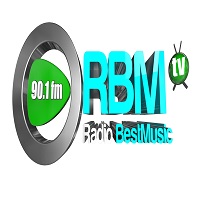Merengue is a vibrant and lively musical genre that originated in the Dominican Republic, deeply rooted in the country's rich cultural heritage and history. It is characterized by its fast-paced rhythm, infectious melodies, and energetic dance moves, making it one of the most popular forms of music and dance in Latin America and beyond.
The origins of merengue are somewhat debated, but many historians trace its roots back to the 19th century. One prevalent theory suggests that merengue emerged from the rural areas of the Dominican Republic, where it was played during social gatherings and celebrations. The music was often accompanied by simple instruments like the accordion, tambora (a type of drum), and güira (a metal scraper), creating a distinctive sound that reflected the everyday life and struggles of the rural population.
Merengue's rhythm is typically composed of two main beats per measure, with an emphasis on the second beat. This 2/4 time signature gives merengue its characteristic "quick-quick-slow" pattern, which is essential for the accompanying dance. The dance itself is a couple's dance where partners move in a circular motion, holding each other close and executing quick steps and turns. The energetic and playful nature of the dance makes it accessible to people of all ages and skill levels.
Over time, merengue evolved and incorporated various influences from other musical genres, including African rhythms, European melodies, and even elements of jazz and rock. This fusion resulted in different sub-genres of merengue, such as merengue típico (traditional merengue), merengue de orquesta (orchestral merengue), and merengue bailable (danceable merengue). Each sub-genre has its unique characteristics but retains the core elements that define merengue.
Merengue típico is often associated with rural areas and features traditional instruments like the accordion, tambora, and güira. It tends to have a more rustic sound and is often played during local festivals and community events. Merengue de orquesta, on the other hand, emerged in urban areas and incorporates a full orchestra, including brass instruments, keyboards, and electric guitars. This style of merengue is typically more polished and produced for commercial success.
Merengue bailable is designed specifically for dancing and often features upbeat tempos and catchy melodies. It has gained significant popularity in nightclubs and dance halls worldwide, making it one of the most recognizable forms of Latin music. Artists like Juan Luis Guerra have played a crucial role in popularizing merengue internationally, blending traditional elements with modern production techniques to create a sound that appeals to a global audience.
The lyrics of merengue songs often revolve around themes of love, joy, and celebration. However, they can also address social issues, political commentary, and personal experiences. The storytelling aspect of merengue lyrics adds depth to the music, making it more than just a dance genre but a form of cultural expression.
Merengue has had a profound impact on Latin American culture and has influenced various other musical genres. Its infectious rhythm and lively energy have inspired countless artists and musicians, contributing to the rich tapestry of Latin music. Today, merengue continues to evolve, with new generations of artists adding their unique touches while preserving its traditional roots.
In conclusion, merengue is a dynamic and captivating musical genre that embodies the spirit and culture of the Dominican Republic. Its fast-paced rhythm, infectious melodies, and energetic dance moves make it a beloved form of entertainment around the world. Whether enjoyed in rural communities or urban nightclubs, merengue remains a testament to the enduring power of music to bring people together and celebrate life's joys.
 Costa Rica Merengue
Costa Rica Merengue

 394
394


